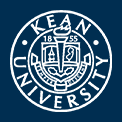Files
Download Full Text (3.9 MB)
Description
Margaret Livingston wrote from Clermont, NY to John Kean, address not included. She wrote she was upset she had not yet had the chance to see John, Susan, and their baby, Peter, and wrote at length about religion. In the postscript, she asked if he would accept 3 each of Spilenberg pearmain and Pippin apples.
Author/Creator
Margaret Livingston, formerly Margaret Beekman (1718-1800)
Recipient
John Kean (1756-1795)
Creation Date
10-13-1788
Document Type
Manuscript
Location
Clermont Estate, or Clermont State Historic Site
Inventory Location
Bay 1, Column 1, LHC Series 2
Recommended Citation
Livingston, Margaret. Margaret Livingston to John Kean, October 13, 1788. Manuscript. From Special Collections Research Library and Archive, Kean University, Liberty Hall Collection 1780s. https://digitalcommons.kean.edu/lhc_1780s/227
Rights
This collection is open to the public for research use. Copyright remains with Kean University. Credit this material. Personal photographs may be made for research purposes. Inquiries regarding publishing material from the collection should be directed to the Special Collections Research Library and Archive at keanscrla@kean.edu.
Publishing Repository
Special Collections Research Library and Archive, Kean University



Collection
Liberty Hall Collection, 1711-1847 (bulk 1790-1830)